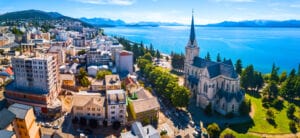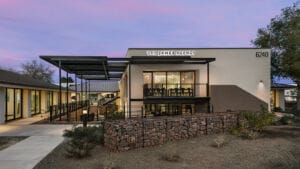Flagstaff Convention and Visitors Bureau and the Scottsdale CVB see dividends from marketing dollars spent
The old saying, “You have to spend money to make money” is especially true in the case of Arizona tourism. Two cases in point are the Flagstaff and Scottsdale Convention and Visitors Bureaus (CVBs). They can quantifiably demonstrate that investing in tourism creates a return.
“We’ve always done a good job of marketing Scottsdale,” said Rachel Sacco, president and CEO of the Scottsdale CVB. “We know it’s the right message because visitors are responding.”
The Scottsdale CVB’s 2010-11 annual budget is $9.7 million and generates $31 in economic impact for every $1 invested in the organization. The Flagstaff CVB has a budget of $1.5 million and helps spur an economic impact of $501 million for the region.
Much of the funding for tourism marketing comes from visitors themselves.
In March 2010, Scottsdale voters passed a 2 percent increase in the city’s bed tax, bringing it to 5 percent. This, combined with an increase in occupancy, led to a 79 percent jump in bed-tax collections from 2009-10 to 2010-11. Half of the new monies support capital projects and special events; the other half supports marketing efforts.
In Flagstaff, the CVB is a division of the city and is fully funded by a portion of the 2 percent “BBB” tax, which stands for “bed, board and booze,” or hotels, restaurants and bars. It generates roughly $5.2 million, and the CVB gets 30 percent of that. The city council allocated an additional $250,000 in marketing dollars to the CVB from March to June 2009 from the city’s Economic Incentive Fund. Flagstaff CVB director Heather Ainardi said that investment helped Flagstaff see a slight bump in April and May of 2009 and prevent big tourism losses in the long run.
“When the rest of the state had double digit declines (in tourism indicators),” Ainardi said, “we were only having minor 2 to 3 percent drops.”
Average daily rates from hotel bookings and revenues per available room were up in 2011 in both Flagstaff and Scottsdale. Occupancy also was up in Scottsdale. And independent studies showed 91 percent of all people who received a Scottsdale visitors guide either made a booking or visited Scottsdale within the next year. Sacco attributes the high number to target marketing.
First, they pinpoint areas that have always had a high interest in Scottsdale: chilly places such as Canada, Minnesota, San Francisco, Chicago, Denver and parts of the East Coast.
Second, they invest in knowing their customers: What do they read? Which activities do they like?
“We won’t send someone who’s interested in art a message about sports” and vice-versa, Sacco said. “We know what messages resonate with them.”
As one result of this targeting, sports bookings have increased 160 percent, she added. Groups and meetings contribute $64.8 million in economic impact.
The Scottsdale CVB should see their budget increase further this coming year to $10.5 million, which hopefully will mean even more of an uptick in tourists.
“The less ability we have to communicate to visitors why they should come here, the less revenue that is brought in,” Sacco said.



